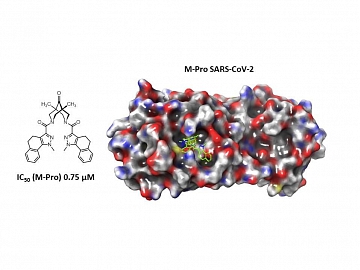AlSU scientists help fight against the new coronavirus infection SARS-CoV-2
 The results of the current research became the interim result of a large joint project that brought together researchers from the State Research Center of Virology and Biotechnology "Vector", N.N. Vorozhtsov Novosibirsk Institute of Organic Chemistry SB RAS, N. D. Zelinsky Institute of Organic Chemistry of RAS, Lomonosov Moscow State University, and scientists of the flagship Altai State University.
The results of the current research became the interim result of a large joint project that brought together researchers from the State Research Center of Virology and Biotechnology "Vector", N.N. Vorozhtsov Novosibirsk Institute of Organic Chemistry SB RAS, N. D. Zelinsky Institute of Organic Chemistry of RAS, Lomonosov Moscow State University, and scientists of the flagship Altai State University.
Varvara Chirkova, senior lecturer of the Department of Physical and Chemical Biology and Biotechnology of AltSU and Associate Professor of the Department of Ecology, Biochemistry and Biotechnology, Candidate of Biological Sciences Elena Sharlaeva took part in the research project. The scientists were engaged in testing and studying the activity of potential inhibitors against the main coronavirus protease 3CL under the guidance of leading researcher at the Russian-American Anti-Cancer Center of AltSU, Head of the laboratory of immunochemistry of the Bioengineering Department of the State Center for Scientific Research "Vector" of Rospotrebnadzor, Candidate of Biological Sciences Dmitry Shcherbakov.
“The results of experiments carried out with bispidin compounds showed that 14 compounds exhibited activity in the concentration range of 1–10 µM, and 3 samples exhibited submicromolar activity. At the same time, studies of the relationship "structure - activity" showed that molecules containing a carbonyl group in the ninth position of the bicycle exhibit maximum activity. The experimental results obtained in this work and their detailed theoretical analysis will become a solid foundation for further research on this topic,” concluded Dmitry Shcherbakov.